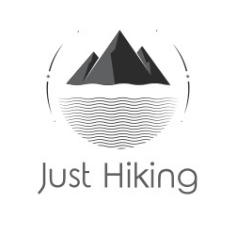Matterhorn
Statistics
- Date - 08/30/2011
- Elevation - 14,692'
- Route - Hornli Ridge
- Miles - 10.0
- Elevation Gain - 6,000'
- ACME Mapper - Not Applicable
- CalTopo - Not Applicable
- Partners - Brian Kooienga, Scott Momburg, Kevin Smith
Description
Brian, Scott, Kevin, and I recently completed a trip to the Swiss and French Alps of Europe. We had a successful trip that included eating, drinking, and some mountaineering. We left Denver International Airport on Saturday, August 27, 2011. After a lay-over in Toronto, Canada, and several hours of flying, we arrived in Zurich, Switzerland, the following day with some moderate jet lag to deal with. We rented a car and drove south to Tasch, Switzerland, which is just north of Zermatt. Since there are no cars allowed in Zermatt, we parked the car in Tasch and took the train into the famed mountaineering and ski resort town with the Matterhorn towering overhead. We quickly made our way to the hostel we stayed at and had dinner before walking around town a bit and retiring for the evening. The hostel included a room with four beds (two bunks), a sink, and community restrooms and showers. Accommodations were more than acceptable with free Wi-Fi, reasonable meals (dinner and breakfast), and clean conditions for 66 Swiss francs per person per night.
The following Monday morning, we had breakfast, organized our backpacks, and prepared for a gondola ride and hike to the Hornli Hut which is a mountain hut located at the foot of the northeast ridge (Hornli Ridge) of the Matterhorn. We purchased our round-trip tickets for the Schwarzsee Lift for 48 Swiss francs. After grabbing some bread and snacks for the trip, we were quickly making our way to the top of the Schwarzsee Lift at 8,448’. The approach hike to the Hornli Hut was somewhat surreal. It was hard to believe that we were preparing to attempt to climb the Matterhorn, one of the most famous mountains in the world. We made quick work of the 2,248’ hike to the hut and arrived only 1 hour and 45 minutes after leaving the top of the lift.
We checked into the Hornli Hut and received our bed assignments. The cost of the hut with breakfast and dinner was 80 Swiss francs. Sleeping quarters were simply large bunk rooms with cushions, a blanket, and a meager pillow. Although the breakfasts of dry bread, jam, and coffee left something to be desired, the dinners were very good and filling. We received cheese and soup as an appetizer, a main course of meat, potatoes or rice, and vegetables, and a small desert portion. Unfortunately, we had to pay for water which was rather expensive because it is flown in by helicopter. A 1.5 liter bottle of water was 8 Swiss francs at the hut. I will admit up front that the company we had at the Hornli Hut was not very friendly. Not only were we climbing independently, but we were also American. The Swiss guides take pride in their mountain and almost seemed offended that we weren’t using their services. I would estimate that approximately 85 percent of all people attempting the Matterhorn use a one-on-one guide and pay around $2,000 to get guided up and down the mountain. We spent the evening staring at the Matterhorn and studying the route as people made their way back to the hut after a day of climbing.
The Matterhorn’s elevation is 14,692’, and the mountain itself needs no introduction. Most climbers and a significant amount of non-climbers are familiar with the uniqueness and beauty of the peak. Although the Hornli Ridge is considered the easiest route to the summit, it is not easy. The ridge separates the steep east and north faces of the mountain and gains approximately 4,000’. Although the climbing is only moderate in terms of technical difficulty, the length of the route, altitude, constant exposure, and difficult route-finding all add up to a demanding ascent that requires speed, efficiency, and relentless concentration.
As previously mentioned, most people climb the mountain with a one guide to one client ratio utilizing a short-rope technique where the pair moves together joined by approximately 10’ of rope over most terrain. The length of the rope increases over more difficult climbing or where a longer belay is needed. The four of us were confident in our climbing abilities so in order to save time, we decided to free climb the route as long as sensibly possible. There is apparently a gentlemen’s agreement that independent parties don’t start the climb until the guides begin the day. Since we were unfamiliar with the specifics of the route, we were more than willing to oblige and began climbing at 5:00 with intentions of staying close behind the guides and following their lead.
We did very well through the first few hours of climbing and maintained close proximity to the guides over half way up the mountain. The ascent was long and continuously exposed, but since we were climbing in the dark some of the exposure factor was eliminated. To this point we were in mountaineering boots scrambling up class 3, 4, and low class 5 rock. I would estimate that the most difficult climbing without fixed ropes was in the 5.4 range. Several sections of the route have permanent fixed ropes to assist where the climbing becomes more difficult. We decided to rope up at the lower Mosley Slabs which are just below the Solvay Hut at 13,133’. The Solvay Hut is a primitive building that sits on the Hornli Ridge and is supposed to be used only in emergency situations. After Brian led us up the lower Mosley Slabs, we took a quick break at the hut and then I led us up the upper Mosley Slabs which are named for an unfortunate American who died on this section of the route over 100 years ago.
We climbed un-roped for a shorter period of time after the Mosley Slabs and then encountered a large permanent snow field high on the shoulder of the mountain. We strapped on our crampons and roped up at this point. Most of the guided parties had pulled away from us by now. As we continued to ascend the more difficult section of the Matterhorn, we started to encounter traffic coming back down the mountain. The general rule that ascending hikers and climbers have the right-of-way does not apply in Europe. Most people are not particularly courteous and you have to be somewhat aggressive to maintain progress. Without hesitation, we simply persevered through the climbers and worked our way up the steep fixed lines and upper snowfield to the summit. It was strenuous and exposed, but we maintained our pace and managed the crowds. The four of us simul-climbed on one 60 meter rope as I placed protection on the numerous large eyebolts that have been placed along the route throughout the upper mountain.
Brian, Scott, Kevin, and I made the summit at 12:15, 7 hours and 15 minutes after leaving the Hornli Hut. This wasn’t quite as fast as we hoped we would ascend, but it certainly wasn’t a terrible time either. Since the descent is just as difficult as the climb and clouds were beginning to form on the east face of the peak, our summit celebration was relatively brief. We congratulated each other, snapped a few photos, and quickly began our way down the Matterhorn. In order to maintain a more efficient pace, we opted to down-climb a majority of the route. For the more difficult and steeper sections of the ridge, we abseiled or rappelled about 6 to 8 times on the descent.
Although going down would seem to be easier and the summit was behind us, we could not let our guard down and had to remain focused throughout the day. The guides and their clients were long gone and only one other independent party of four was left in sight. Route-finding on the descent became more challenging; however, all of us contributed to identifying key sections of the down-climb as we worked as a team to find the correct path back down the mountain. Our progress slowed as the sun set behind the mountains, but we turned our headlamps on and managed our way back to the Hornli Hut safely and without incident.
We returned to the comforts of the Hornli Hut at 10:00 after negotiating the last of the fixed lines which we went up 17 hours ago. The Schwarzsee Lift had stopped running earlier in the evening, so our only option was to spend another night at the hut which cost us each another 40 Swiss francs. We gathered in the darkness of the dining room and were able to purchase four Heinekens to enjoy by the glow of our headlamps. We celebrated our day knowing we had just completed a climb of a lifetime. Despite the long day, we were proud of what four independent Americans had accomplished. The Matterhorn is an amazing mountain that requires the utmost respect.
After a few hours of rest, we awoke the next morning after another group of climbers set out for the summit. We took several more photos and then hiked back down to the Schwarzsee Lift in 1 hour and 10 minutes. We rode the gondola back to Zermatt and then walked down to the hostel we had previously stayed at. After getting cleaned up, we ate, rested, and walked around Zermatt visiting local shops and the climber’s cemetery. Over 500 deaths have occurred on the Matterhorn and there were sobering inscriptions on some of the headstones such as, "I Chose to Climb".
We spent the night at the hostel and woke Thursday morning to poor weather conditions. We had intended to attempt another climb in the area, but with low cloud cover and fresh snow high on the mountains we simply took the train out of Zermatt back down to Tasch. With the car loaded with our gear, wine, cheese, bread, and chocolate, we said goodbye to Zermatt and the Matterhorn and fixed our sights on Chamonix, France.
Photos
 Waiting for the train to Zermatt.
Waiting for the train to Zermatt.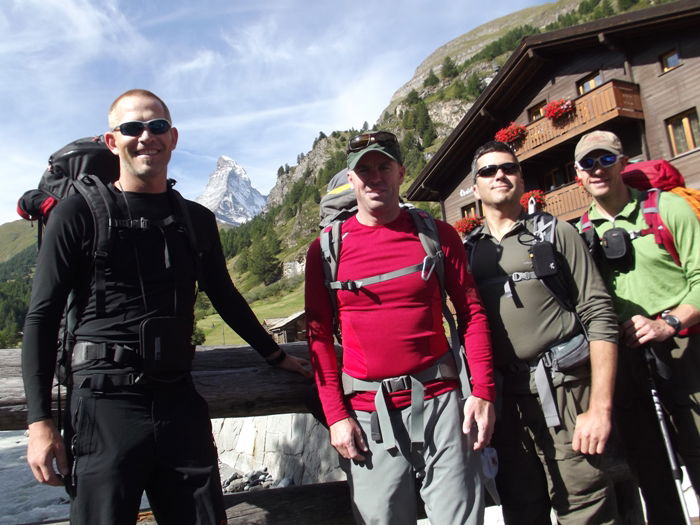 James, Kevin,, Scott, and Brian
James, Kevin,, Scott, and Brian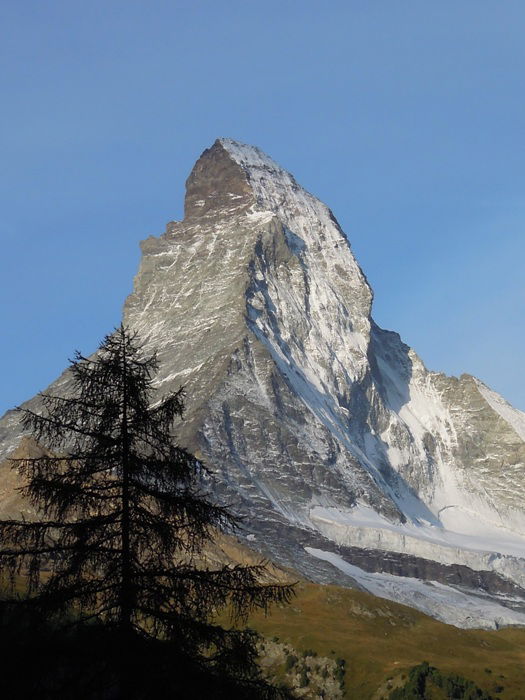 Matterhorn
Matterhorn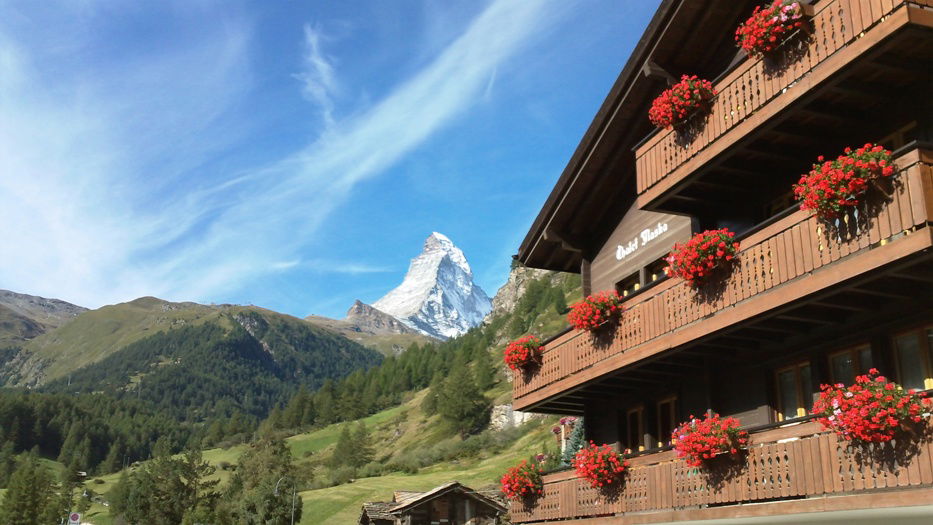 Matterhorn
Matterhorn Going to get our lift ticket.
Going to get our lift ticket.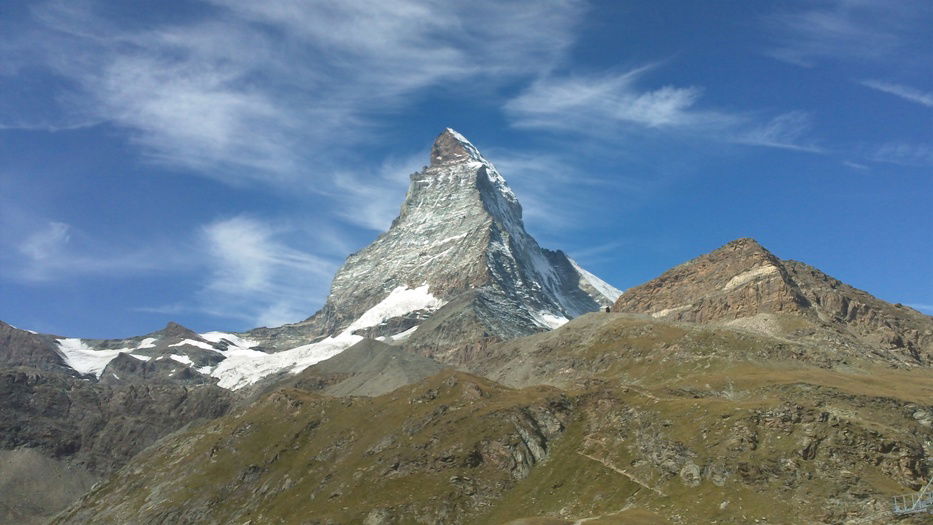 Matterhorn
Matterhorn Approach
Approach Approach
Approach Matterhorn
Matterhorn Approach
Approach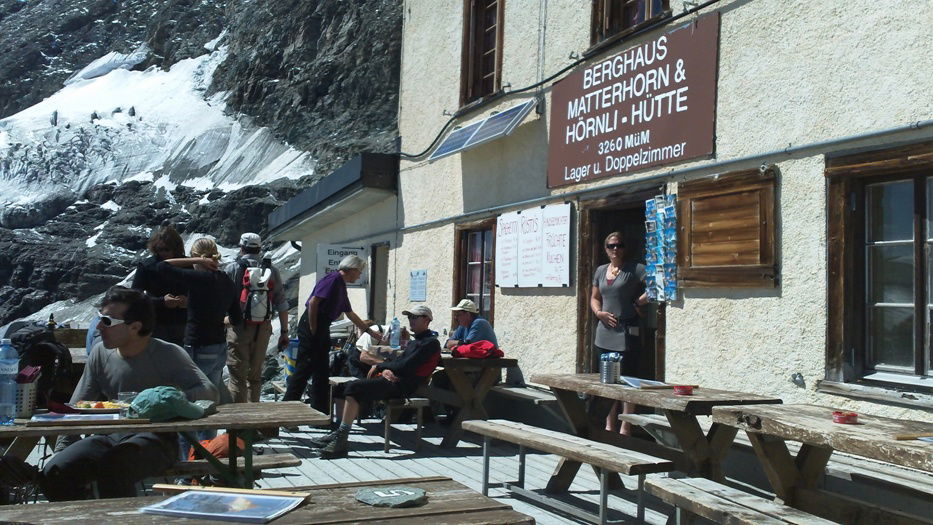 Hornli hut
Hornli hut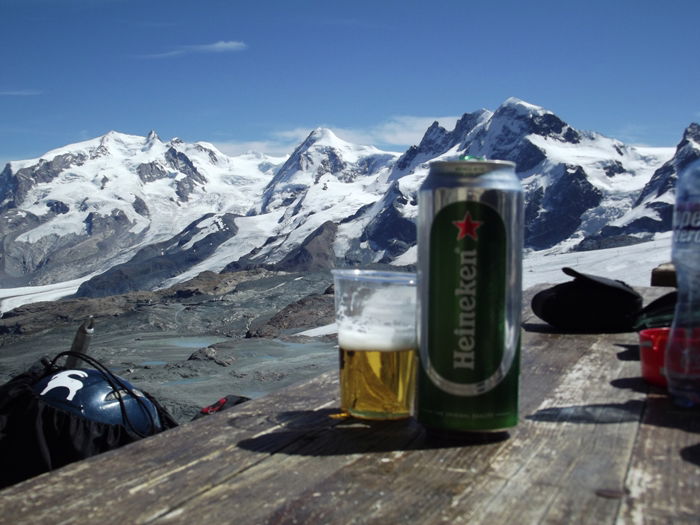 Carb-Loading
Carb-Loading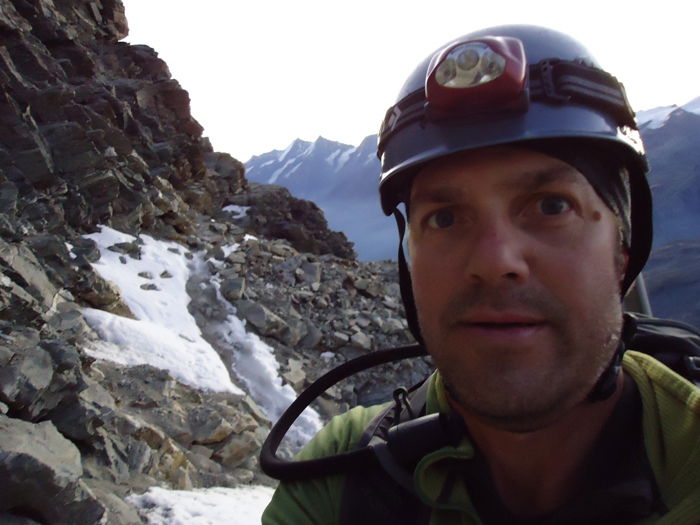 Scott
Scott Kevin
Kevin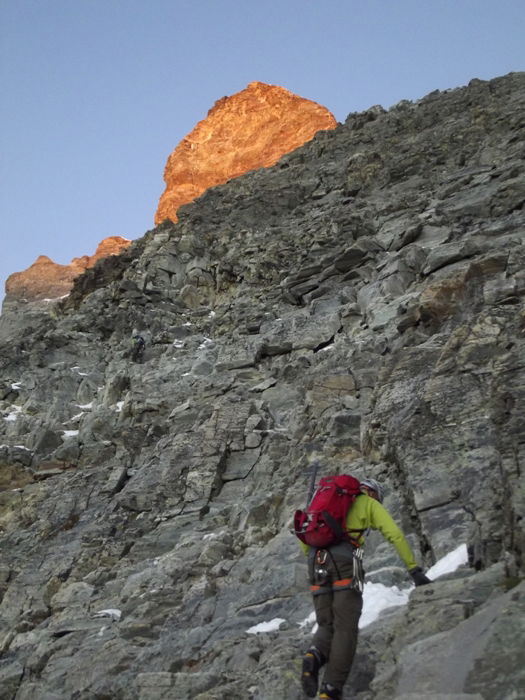 Brian
Brian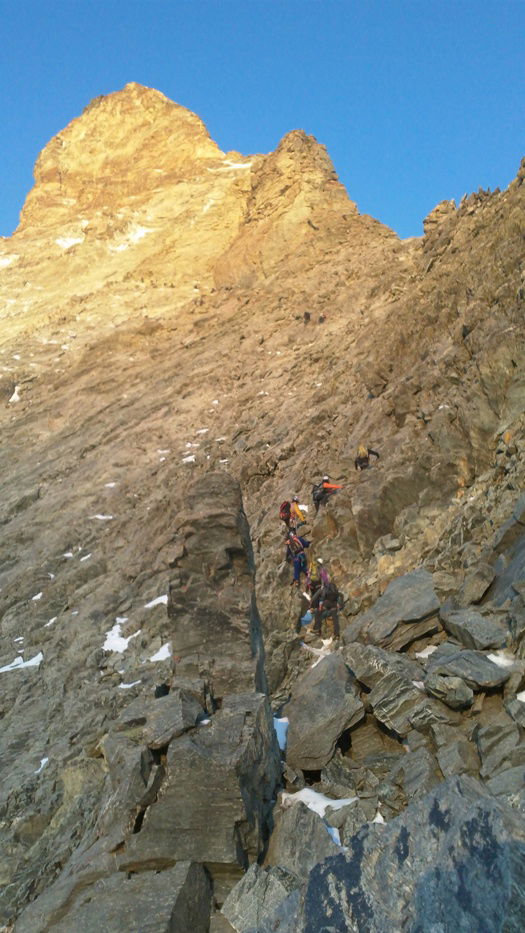 Following the guides in front of us.
Following the guides in front of us.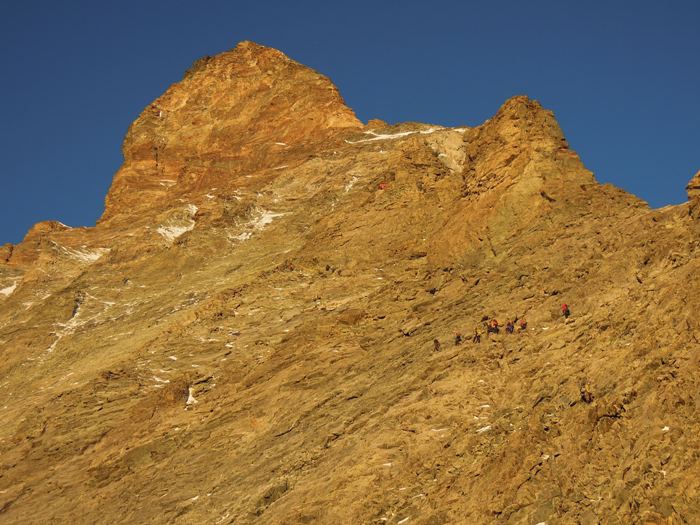 Sunrise
Sunrise Scott
Scott James
James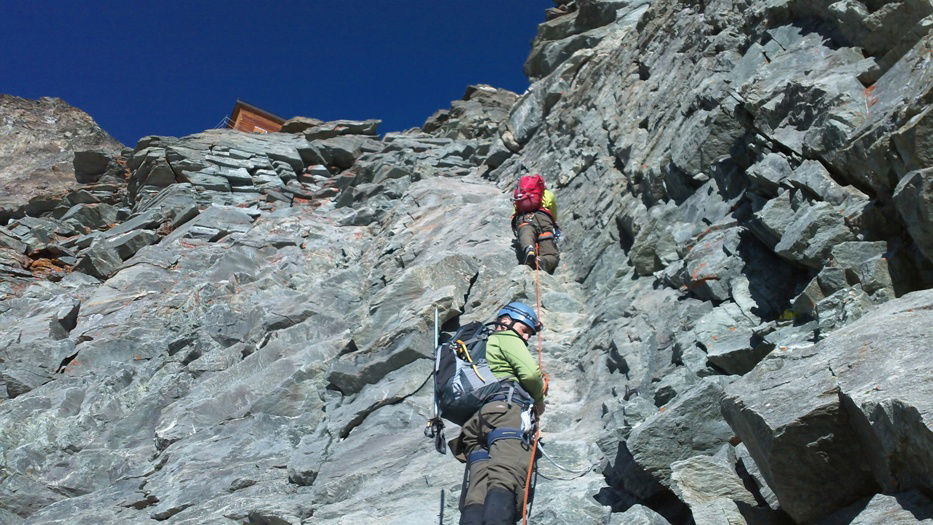 Brian leading the lower Mosley Slabs.
Brian leading the lower Mosley Slabs.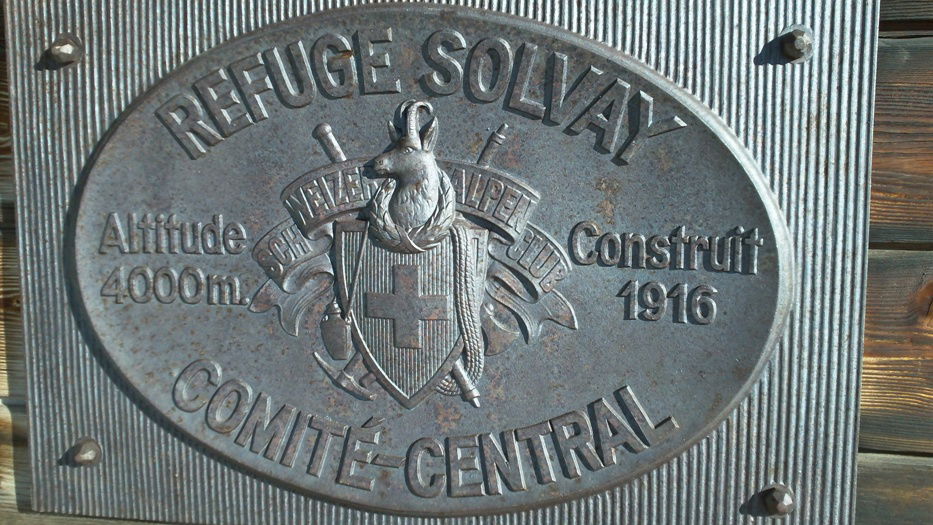 Solvay Hut
Solvay Hut Kevin
Kevin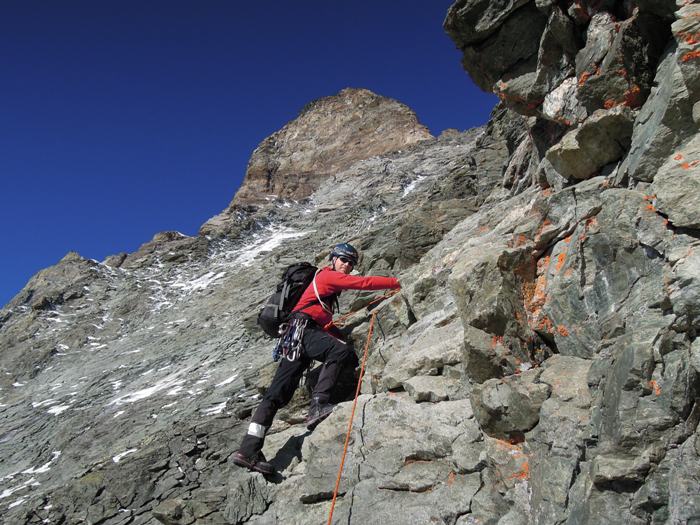 James leading the upper Mosley Slabs.
James leading the upper Mosley Slabs.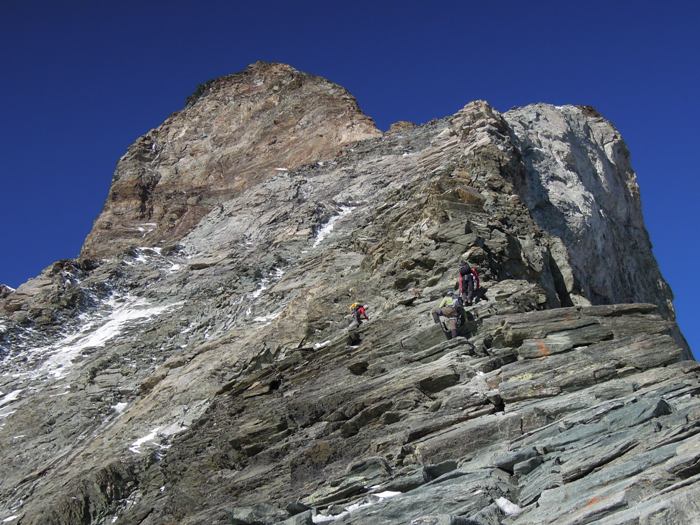 Upper portion of the mountain.
Upper portion of the mountain.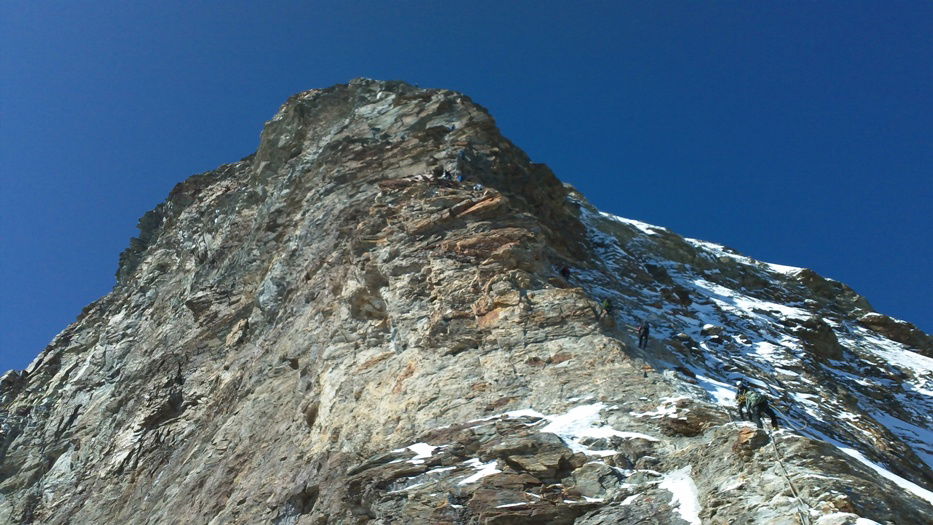 Upper section of the mountain.
Upper section of the mountain.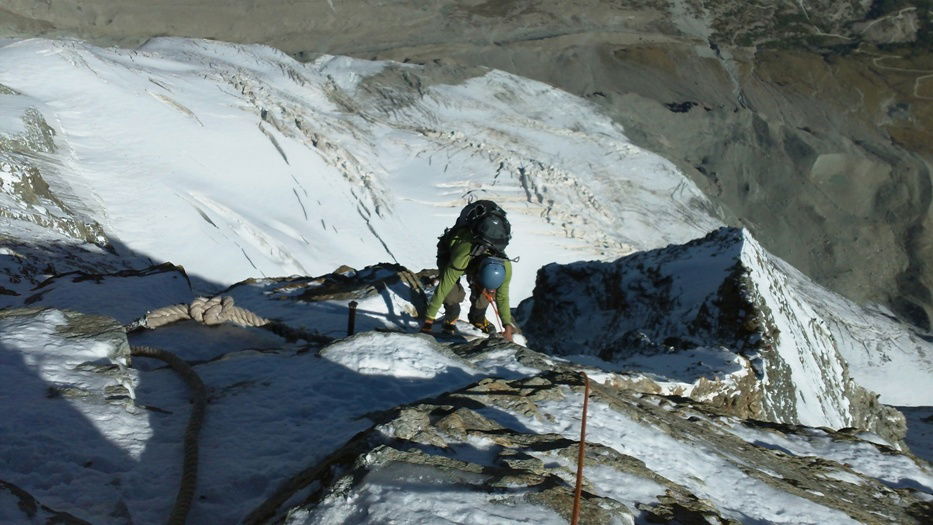 Scott
Scott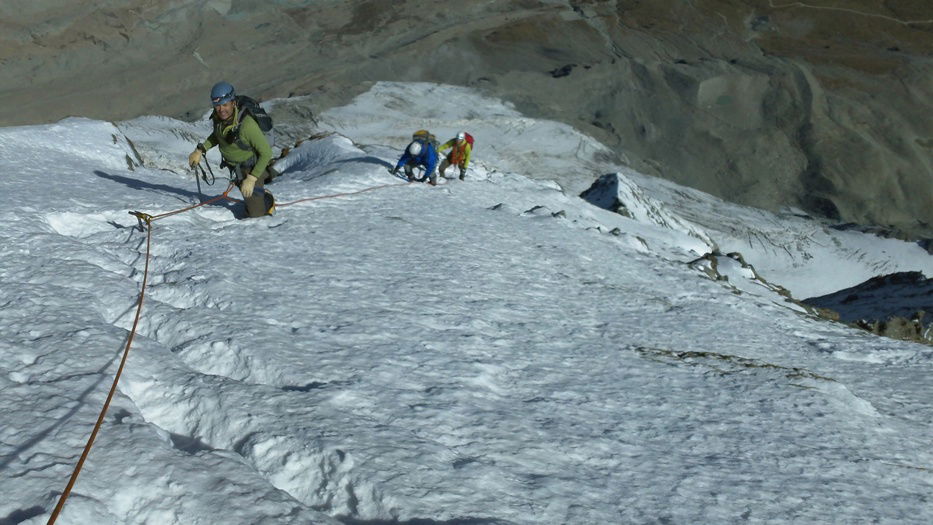 Scott, Kevin and Brian
Scott, Kevin and Brian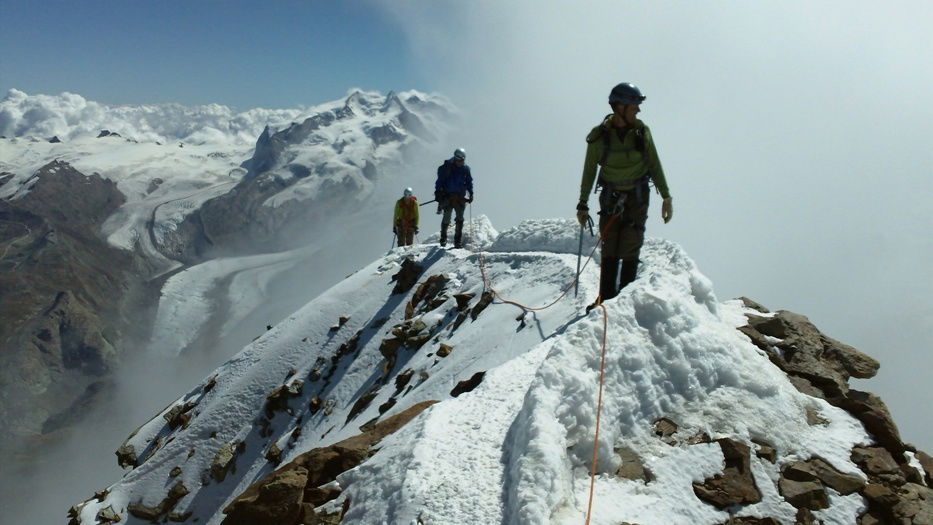 Brian, Kevin, and Scott
Brian, Kevin, and Scott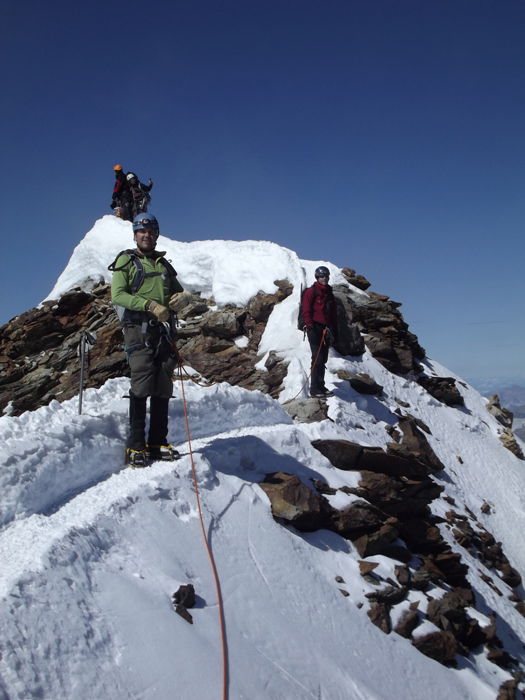 Scott and James
Scott and James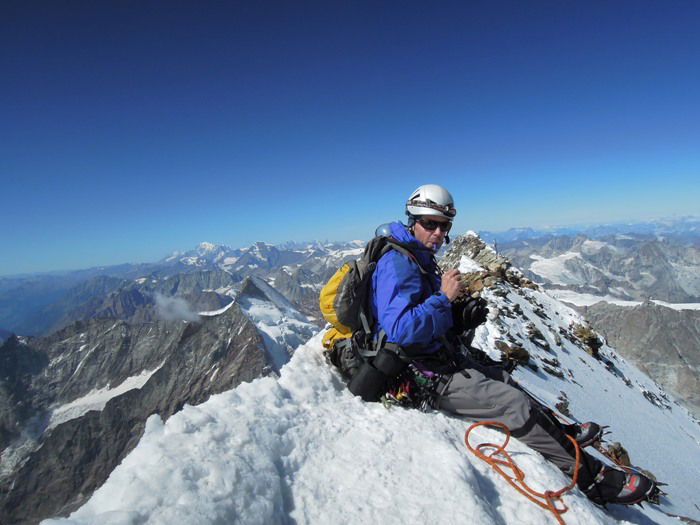 Kevin
Kevin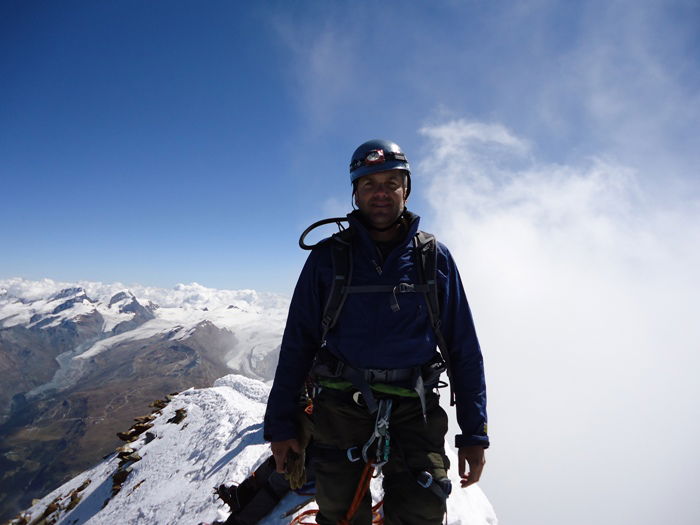 Scott
Scott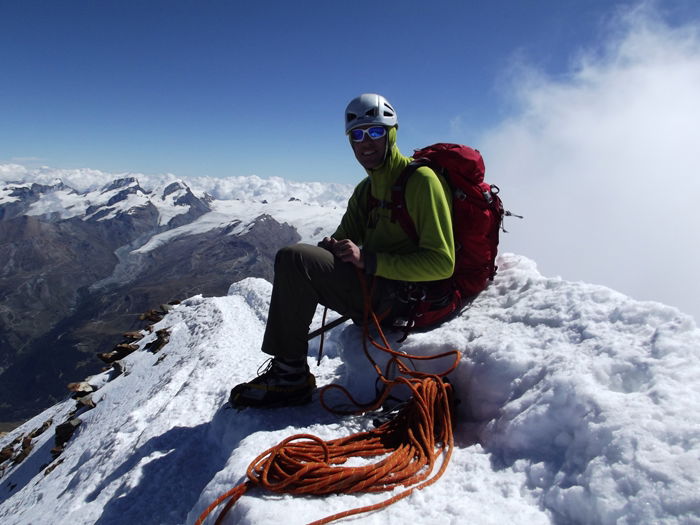 Brian
Brian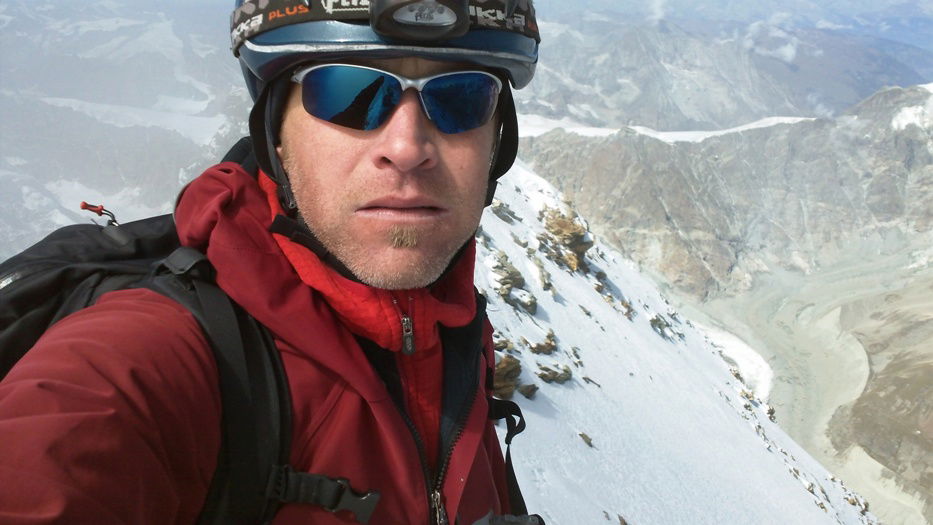 James
James Zermatt
Zermatt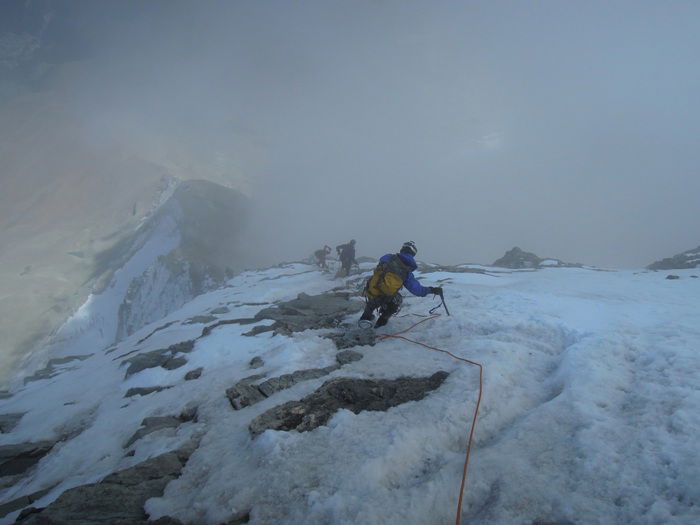 Descent
Descent Rappel
Rappel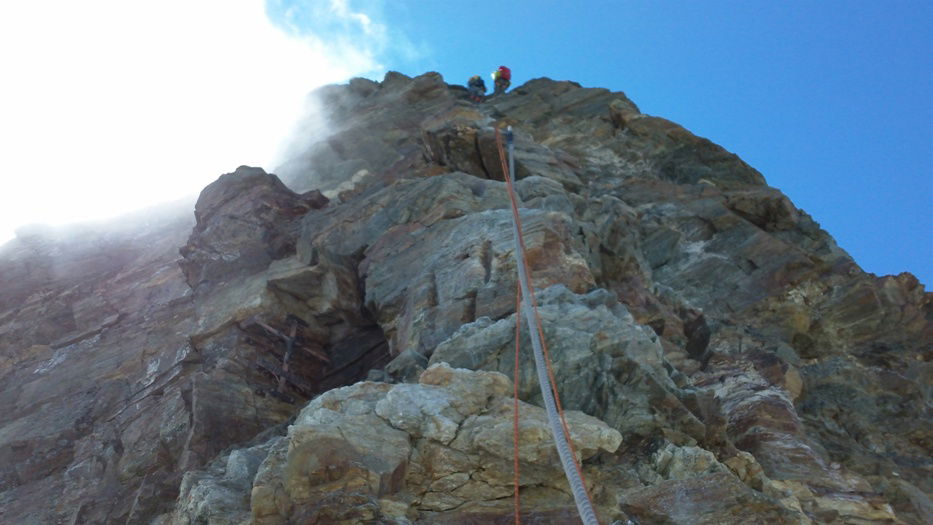 Rappel
Rappel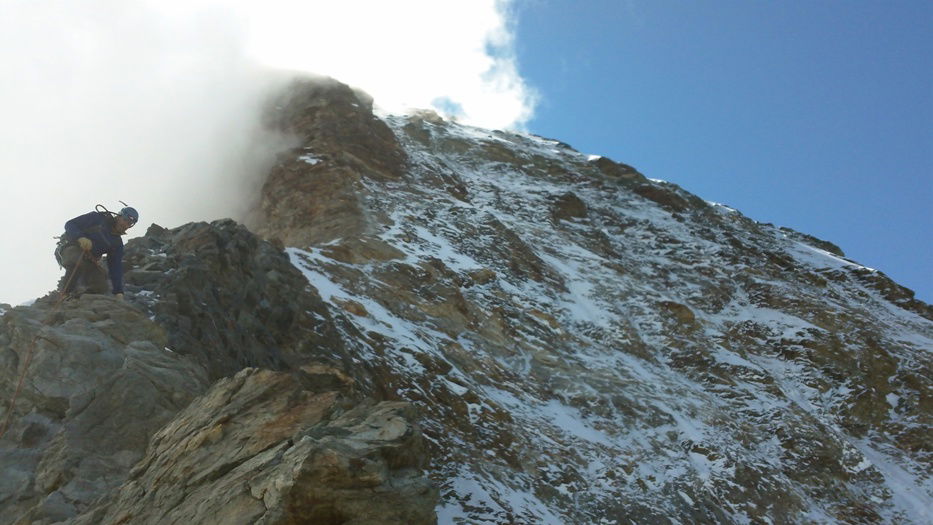 Scott
Scott Rappel
Rappel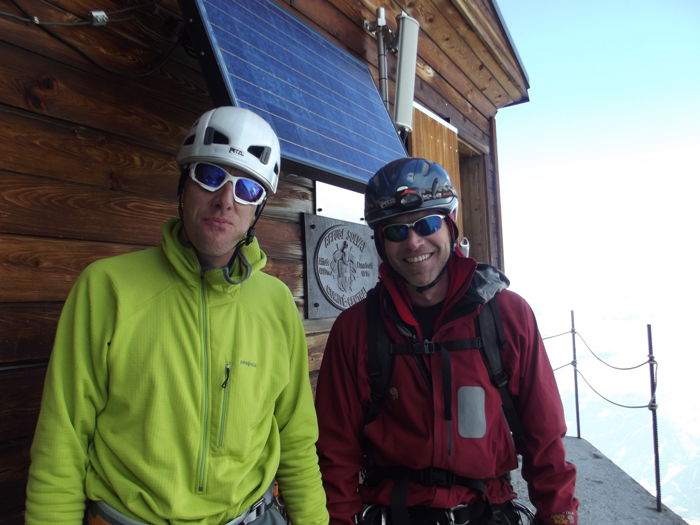 Brian and James back at the Solvay Hut.
Brian and James back at the Solvay Hut.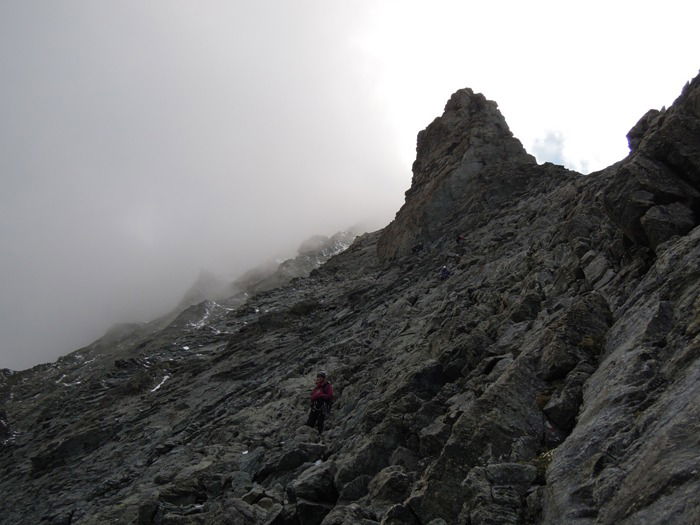 Down-Climbing and Route-Finding
Down-Climbing and Route-Finding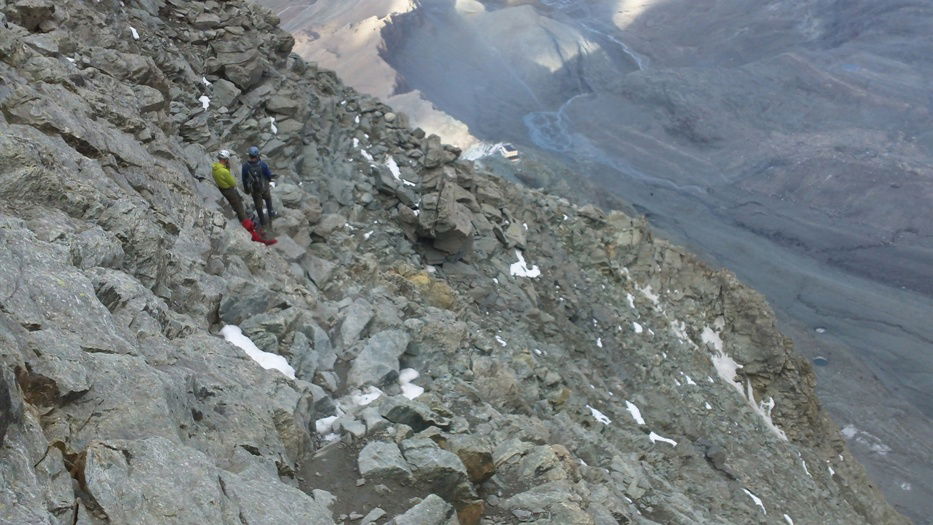 Descent
Descent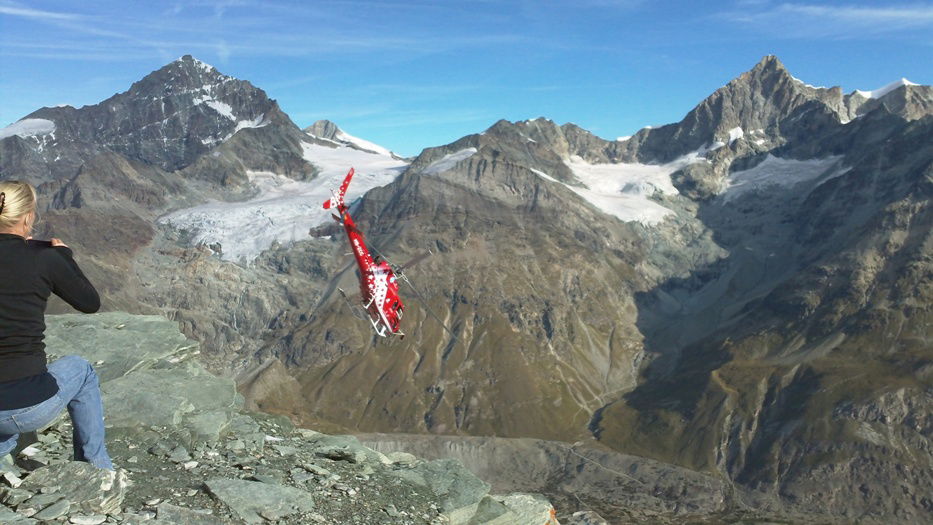 Helicopter
Helicopter The four of us the following morning.
The four of us the following morning.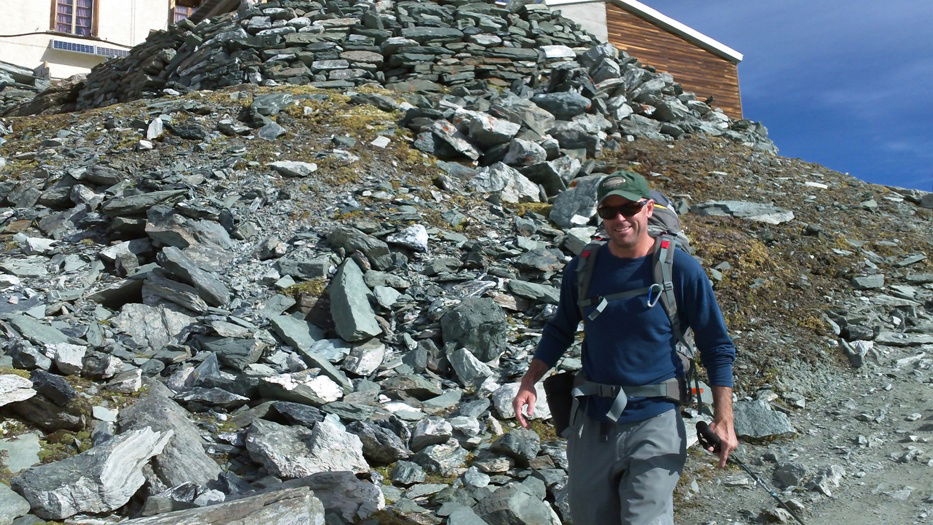 Kevin
Kevin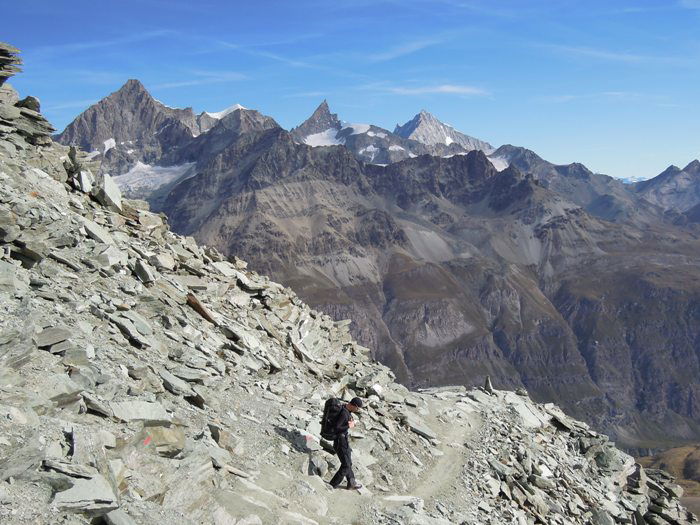 James
James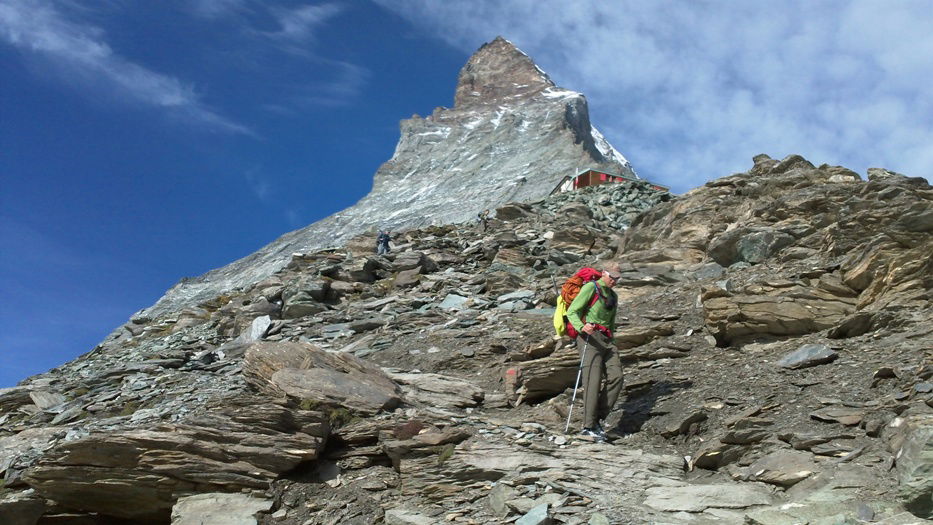 Brian
Brian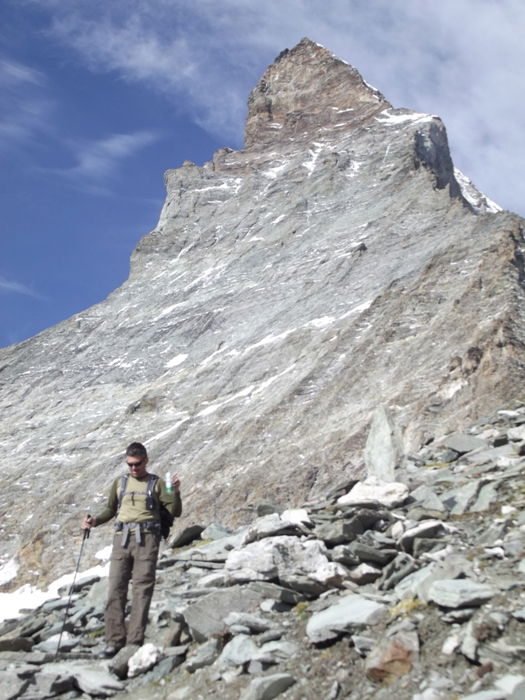 Scott (With a beer at 9:00.)
Scott (With a beer at 9:00.) Matterhorn
Matterhorn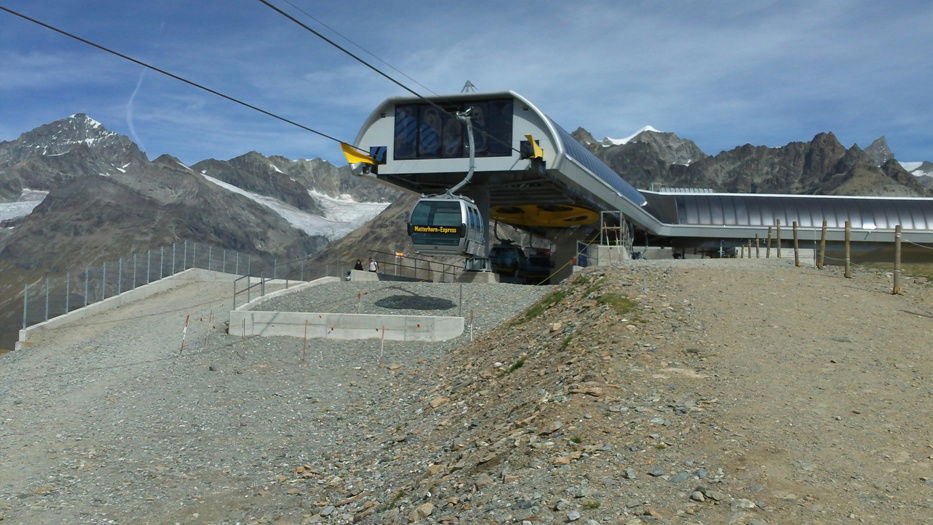 Ski lift back down to Zermatt.
Ski lift back down to Zermatt. James, Scott, and Brian ready to move on.
James, Scott, and Brian ready to move on. Train Depot
Train Depot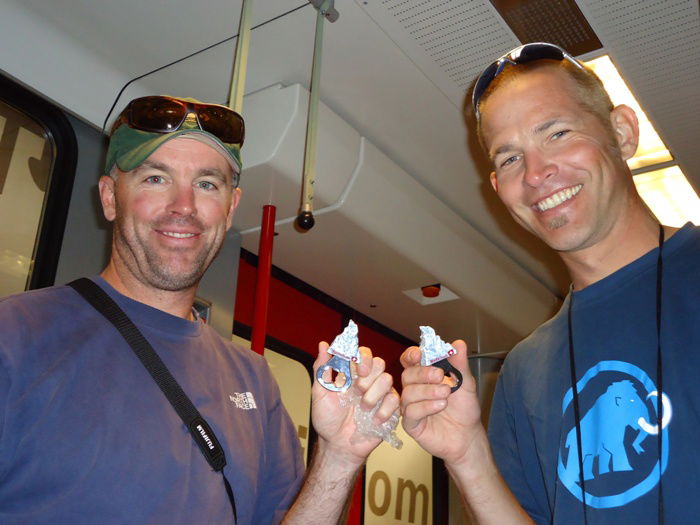 Kevin and James
Kevin and James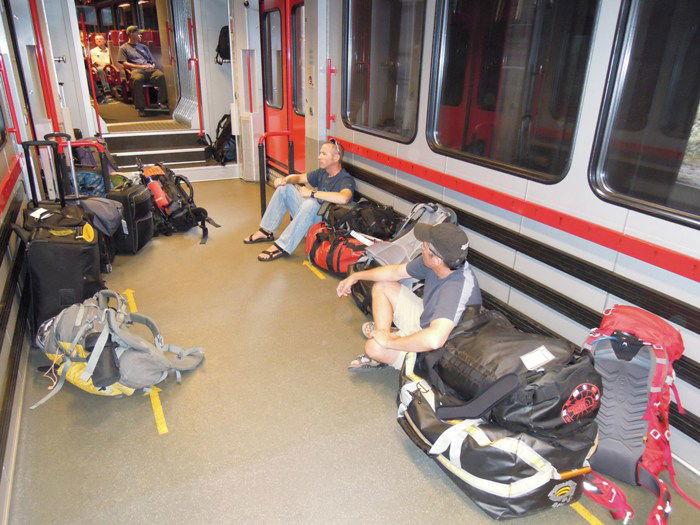 James and Scott in the train.
James and Scott in the train. Swiss/French Border
Swiss/French Border
